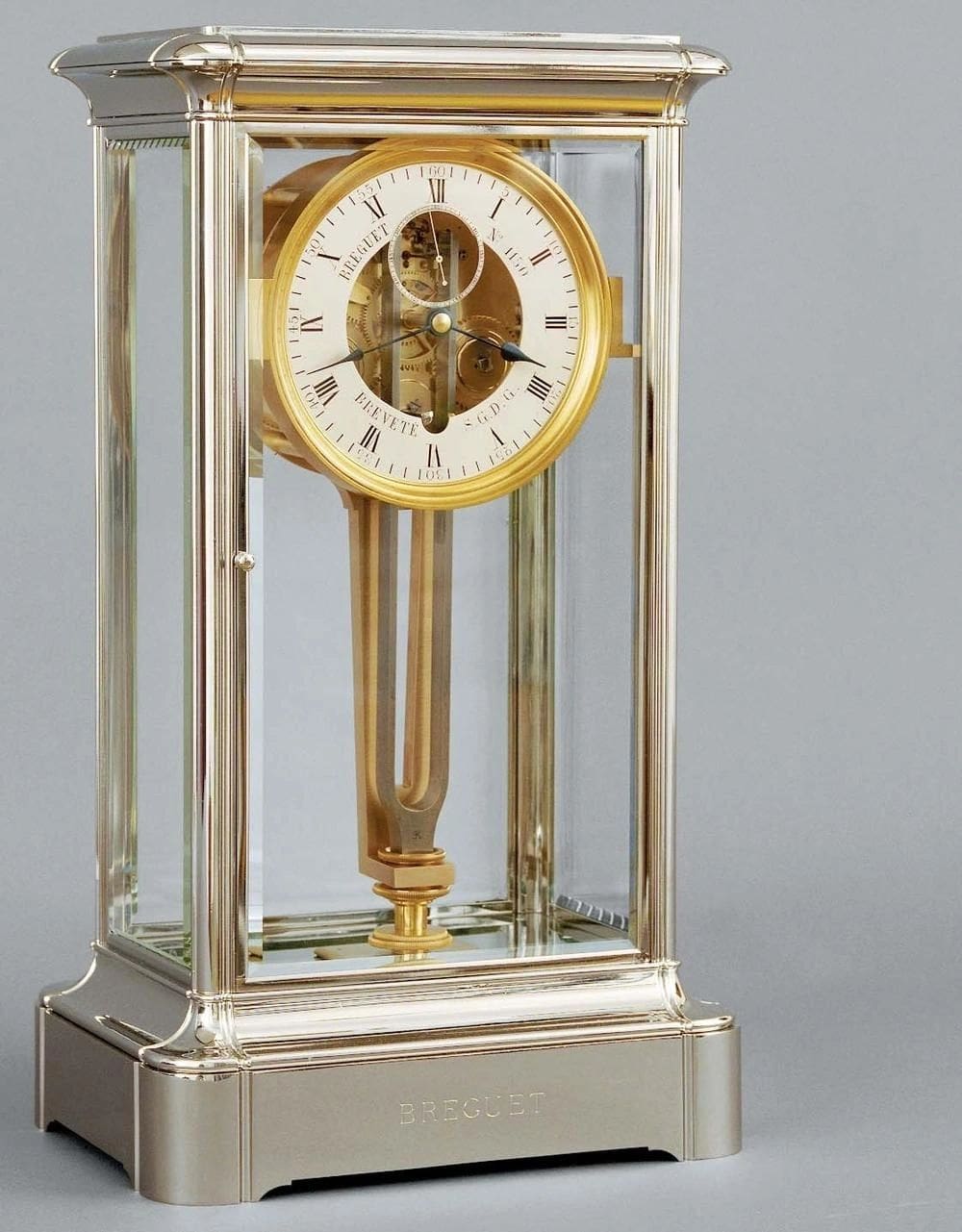
Accutron was not the 1st fork timepiece
Breguet. 1866. Patent of the tuning-fork clock (26 October).
Nickel-plated metal, brass, steel
Height: 46 cm. Width: 26 cm. Depth: 19 cm.
Dial signed: BREGUET N° 1150 BREVETE SGDG
Case signed: BREGUET
Initials PK at base of diapason.
Finished in 1868
The nickel-plated metal case has glass on all four sides.
The annular dial is engraved with Roman numerals for the hours and Arabic numerals for the five minutes, with a small eccentric seconds dial in the upper part.
The clock movement was built on the principles set down in patent n° 73414 registered on 20 October 1866 by Louis-Clément Breguet. It has two barrels, a train and an escapement. The regulating organ is a steel tuning-fork, two hundred and fifty millimetres in length and vibrating at one hundred hertz. One of its arms touches the escapement, whose function is to keep it vibrating.
The fork-clock was first described by N. Niaudet in 1866. It is used to determine the frequency of a fork to high accuracy. The vibrating fork drives the clock in the same way as a pendulum in a pendulum clock–by way of an escapement mechanism. This Max Kohl clock uses a 100 Hz fork to drive a tiny escapement. Energy is provided by an enclosed wind-up spring. The three dials record the total number of vibrations. The absolute frequency of the fork can then be determined by comparison with an astronomical time standard.
The frequency of the fork can be fine-tuned by adjustments of small weights on the tines. A small mirror on one prong can be used as in the Vibration Microscope to calibrate a second fork.
Forks like this were used not only in acoustics research, but as laboratory tools for the precise measurement of time. For example, A. A. Michelson used such a fork to determine the rate of rotation of a spinning mirror in his historic measurement of the speed of light in 1882
Tags: